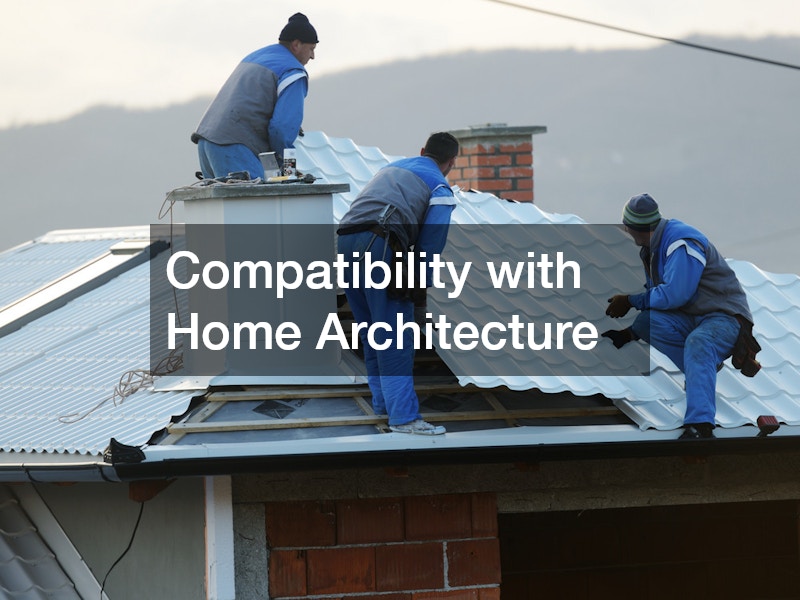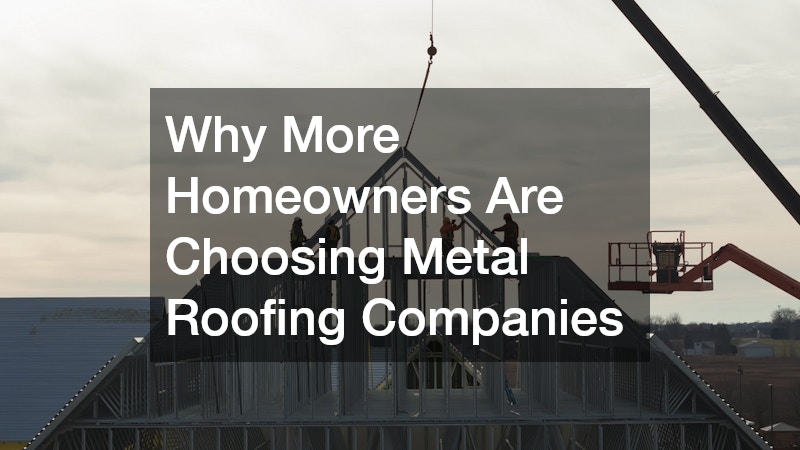The trend towards using metal roofing companies among homeowners has seen a significant rise in recent years. Fueled by the demand for sustainable and long-lasting materials, metal roofs are becoming increasingly popular. This article will explore the reasons behind this shift, focusing on the benefits, costs, and design versatility of metal roofing.
The Benefits of Metal Roofing
Durability and Longevity
One of the most compelling benefits of metal roofing is its unparalleled durability. Unlike traditional roofing materials such as asphalt shingles, metal roofs can withstand severe weather conditions, including strong winds, heavy rain, and snow. According to industry experts, a well-maintained metal roof can last between 40 to 70 years, making it a lifelong investment for homeowners.
Moreover, the resilience of metal roofing reduces the need for frequent repairs or replacements. This longevity not only saves money over time but also adds a sense of security knowing that the roof provides reliable protection. Homeowners find reassurance in the manufacturer’s guarantees, which often extend far beyond those of traditional roofing materials.
Another aspect contributing to metal roofing’s durability is its ability to resist common roofing issues such as mold, mildew, and insect infestation. These roofs are typically made from materials like galvanized steel, aluminum, or copper that are resistant to these damaging elements. As a result, maintenance is minimal, offering long-term peace of mind.
Eco-Friendly and Energy Efficient
Environmental concerns play a significant role in the growing popularity of metal roofs. These roofs are not only made from recycled materials but are also 100% recyclable at the end of their lifespan. This cycle of sustainability is appealing to eco-conscious consumers aiming to reduce their carbon footprint.
A key advantage of metal roofing is its energy efficiency. The reflective surface of metal roofs helps to reduce heat absorption, keeping homes cooler during the hot months. Homeowners report a noticeable decrease in their energy bills due to reduced reliance on air conditioning systems.
This energy-saving capability is further enhanced by the potential to install additional insulation under the metal roofing. Effectively insulating the home can lead to further energy conservation and cost savings. As a result, many homeowners see metal roofs as both an eco-friendly and economically favorable investment.
How Metal Roofing Compares in Cost to Traditional Roofing
Upfront Costs versus Long-Term Savings
At first glance, the upfront cost of metal roofing may seem higher than traditional options such as asphalt shingles. However, it’s essential to consider metal roofing as a long-term investment. Over time, the durability of metal roofs translates into significant savings on maintenance and repair costs.
Beyond maintenance savings, the energy efficiency of metal roofs contributes to reduced utility bills. The initial investment may be steep, but the long-term financial benefits are substantial. This cost-efficiency has earned metal roofs a favorable reputation among forward-thinking homeowners.
Metal roofing’s longevity also plays a crucial role in its cost-effectiveness. Unlike conventional roofs that require replacement every 10 to 20 years, metal roofs can endure for several decades. The accumulative savings from fewer replacements and maintenance tasks make metal roofing an economically sound choice.
Insurance and Resale Value Implications
Homeowners often find that metal roofing positively impacts their insurance premiums. The enhanced resilience and fire resistance of metal roofs lower the risk of damage claims, which can result in reduced insurance costs. This financial benefit adds an extra layer of appeal to metal roofing.
Furthermore, the robustness of metal roofing can significantly increase a property’s resale value. Prospective buyers are drawn to the reduced need for maintenance and the promise of long-term durability. A well-installed metal roof can be a persuasive selling point, providing a solid return on investment.
Investing in metal roofing can thus be viewed as a strategic financial decision. Both the decreased insurance premiums and the potential increase in property value underscore the economic advantages. These factors convince many homeowners to opt for metal over traditional roofing materials.
Styles and Options Available with Metal Roofing
Variety of Styles and Colors
Metal roofing offers a diverse range of styles and colors, allowing homeowners to personalize their roofs without compromising functionality. Options include standing seam, corrugated metal, and metal shingles, each providing distinct aesthetic and functional benefits. The choice of colors and finishes is vast, catering to different tastes and architectural requirements.
This variety makes metal roofing highly adaptable to various design preferences. Homeowners can choose bold, contemporary styles or more subdued, traditional appearances. The flexibility in style and color means a metal roof can enhance the visual appeal of any home.
Compatibility with Home Architecture
The versatility of metal roofing extends beyond aesthetics to its compatibility with various architectural styles. Whether for modern homes or historic structures, metal roofs can be tailored to complement diverse architectural designs. This adaptability makes metal roofing an ideal choice for virtually any home.
In addition to matching existing design elements, metal roofing can add unique accents that enhance a home’s overall aesthetic. The clean lines and sleek profiles of metal roofing panels contribute to a polished, sophisticated appearance. This compatibility offers homeowners creative freedom in designing or upgrading their homes.
The rise in popularity of metal roofing among homeowners can be attributed to its numerous benefits, including unparalleled durability, energy efficiency, and economic viability. The initial costs, though higher than some options, offer significant long-term savings and value. Additionally, the variety in styles and compatibility with diverse architectures make metal roofs a flexible and attractive choice for modern homeowners.


